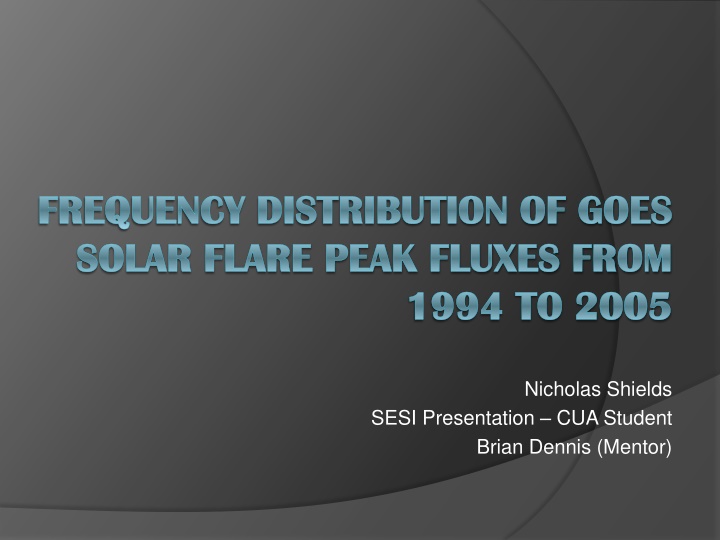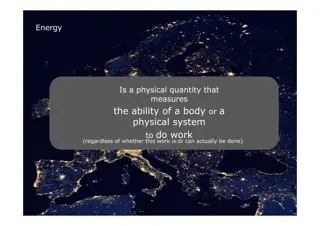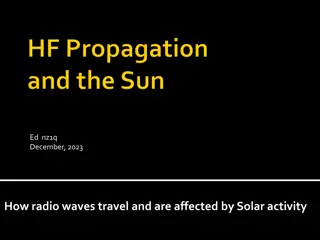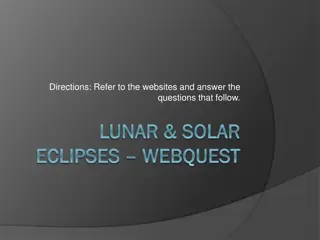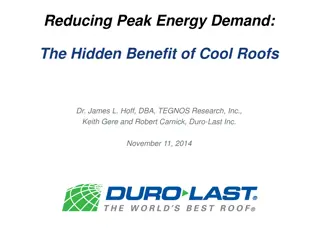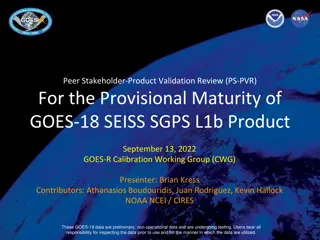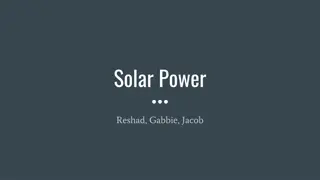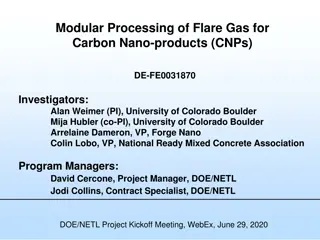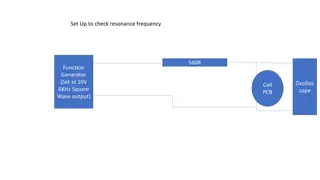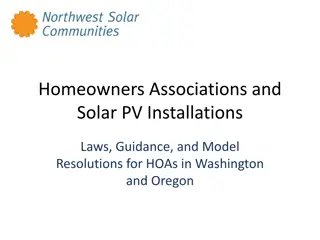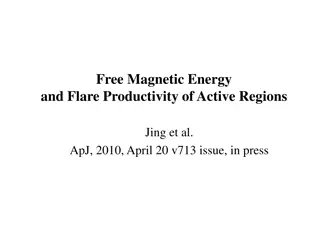Analysis of GOES Solar Flare Peak Fluxes Frequency Distribution (1994-2005)
This presentation explores the frequency distribution of GOES solar flare peak fluxes from 1994 to 2005. It discusses the background on GOES satellites, event detection methods, data processing techniques, and the effects of time and quantization filters on the data. The analysis includes examples of event detection and the process of background subtraction to study solar flares using GOES data.
Download Presentation

Please find below an Image/Link to download the presentation.
The content on the website is provided AS IS for your information and personal use only. It may not be sold, licensed, or shared on other websites without obtaining consent from the author.If you encounter any issues during the download, it is possible that the publisher has removed the file from their server.
You are allowed to download the files provided on this website for personal or commercial use, subject to the condition that they are used lawfully. All files are the property of their respective owners.
The content on the website is provided AS IS for your information and personal use only. It may not be sold, licensed, or shared on other websites without obtaining consent from the author.
E N D
Presentation Transcript
FREQUENCY DISTRIBUTION OF GOES FREQUENCY DISTRIBUTION OF GOES SOLAR FLARE PEAK FLUXES FROM SOLAR FLARE PEAK FLUXES FROM 1994 TO 2005 1994 TO 2005 Nicholas Shields SESI Presentation CUA Student Brian Dennis (Mentor)
OVERVIEW Background on GOES satellites GOES Event list Size Distribution Fit power-law to the size distribution
What is GOES? Geostationary Operational Environmental Satellites X-ray Spectrometer 3 second data in two wavelengths 1-8 Angstrom 0.5-4 Angstrom
Event Detection First we take the raw data and smooth it using either a boxcar smoothing or an average smoothing The derivative of the data is taken Where the derivative crosses zero we find either a peak or a valley
Data-drop/spike Filter: The SDAC data often has drops or spikes that we do not want to declare peaks and valleys.
Time Filter The time intervals between a valley the next peak and the following valley are examined: ! ! "# $ % !& ' (% )*+,!- ! "# $ % !& ' (% )*+,!. !
Quantization Filter Quantization level = flux value where the step size changes Matches peak flux to quantization level Difference between peak and valley flux values must be greater than quantization step * 3
Background Subtraction: Method GOES satellite records even non-flaring plasma Difficult to distinguish the flux levels of the smaller solar flares Linear background subtraction Runs from one valley to the next It takes the flux level at the first valley and subtracts it from every point in the data array until reaching the next valley
Size Distribution A size distribution was performed on un-subtracted data background subtracted data. Binned the data by the flare size Shows the frequency of solar flares over time based on their size
Power-Law Fits Used OSPEX (object spectral executive) Automatic fit using the closest parameter settings Single power law fit dN(p)/dp = A p dN(p) is the number of events with a size between p and p + dp A is a normalization parameter and is the power-law index
Work Still to be Done: Change to creating a size distribution for a set number of flares rather than a set time interval Use c-statistic to find the fit parameters rather than chi-squared
Acknowledgements Brian Dennis Andy Gopie Richard Schwartz Kim Tolbert Fred Bruhweiler
